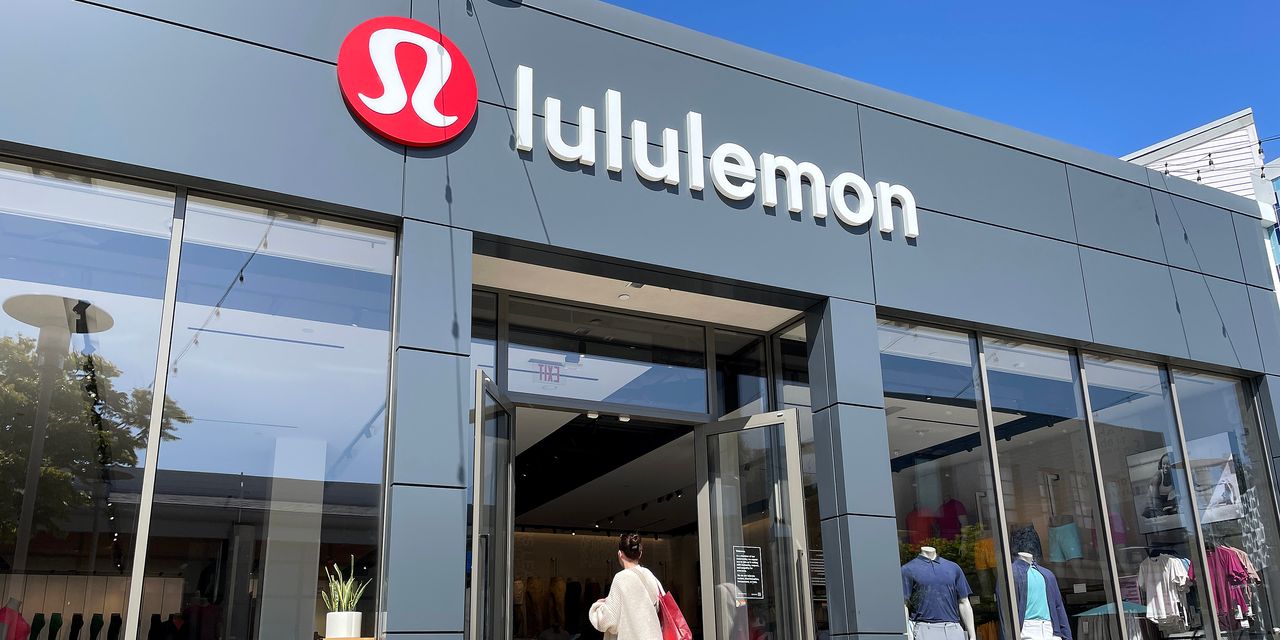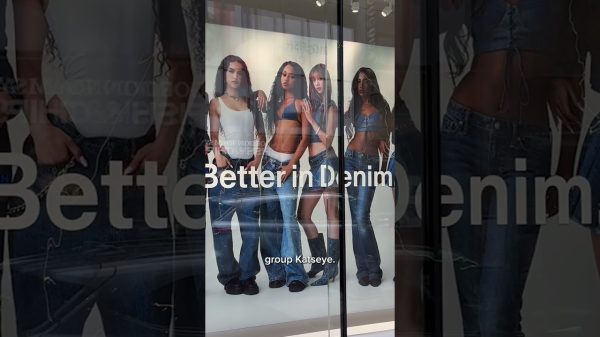Lululemon
shares have soared about 17% so far this year and have more than tripled over the past five years. In its most recent quarter, it beat earnings and sales expectations and lifted guidance for fiscal 2023.
In a retail environment weighed down by shrinking discretionary spending, investors may wonder how Lululemon (ticker: LULU) is managing to deliver such a performance. Rather than focusing overly on multiples or earnings per share, here we’ll mostly explore a different set of numbers to illuminate other layers of the business.
Let’s begin with Lululemon’s belt bag—a jazzed-up Gen-Z fanny pack. The product first hit shelves in 2018, and by the summer of 2022, it exploded in popularity, largely thanks to TikTok.
An Enticing Price
The belt bag has especially resonated with younger consumers, who find the $38 price more budget-friendly than some of the triple-digit products on Lululemon offers.
If the belt bag was merely a stand-alone TikTok trend that brought young consumers into stores for a moment, it might boost financial performance for a quarter or two but would hardly be worth mentioning at this point. However, that doesn’t appear to be the case.
The company sees the belt bag “as a strong acquirer of new guests, who importantly have not shown any behavior differences versus existing guests,” wrote J.P. Morgan analysts led by Matthew Boss in a report earlier this month.
Lululemon management also sees opportunities to expand within the accessories category, touting strong growth and market share potential in socks, duffels and backpacks, with new product launches planned for the fall, Boss continued.
How Young Shoppers Get Their Information
LTK’s study on Gen Z shoppers, published in April, said 75% of that generation make online purchases based on creator recommendations. Creators are individuals who post content on social media that focuses on a particular product.
It is worth noting that student loan payments resuming may mean some of those younger consumers will trim back shopping trips, dedicating more dollars to hefty monthly payments.
By traditional metrics, the retailer isn’t cheap. Lululemon is currently trading at a price-to-earnings ratio of 50. In 2022, adjusted earnings landed at $10.07 a share. This year, analysts have penciled in $11.92 a share. Of the analysts surveyed by FactSet, 73% rate Lululemon shares as Buy, 15% as Neutral, and 12% as Sell.
A creator-driven consumer market bodes well for Lululemon whose shoes, for example, have made appearances on social media, securing10.9 million hashtags on TikTok. The retailer stepped into the footwear game last year, launching shoes specifically designed for women.
Some TikToks highlight the aesthetic of the shoe, while others offer users a full review, like one posted last year by AthletiKaty—a runner who captured her first time wearing Lululemon shoes, reviewing them in real time. The video snapped up nearly 18,000 likes, and in the comments, users posed questions about different shoe brands.
These videos also illustrate a point made by Jefferies analyst Randal Konik earlier this year. He commended the company for “organically building a brand” without devoting sizable amounts of money to marketing, adding that “their stores are marketing vehicles in themselves.”
And indeed, the locations are bright and fitness-center-esque, neatly arranged with leggings, zip-up sweatshirts, shorts, tanks and a rotation of seasonal items each stamped with the tiny logo.
Strong Foot-Traffic Numbers
According to data from Placer.ai, visits to Lululemon stores have consistently outpaced visits to apparel retail and luxury retail locations. In April, foot traffic to Lululemon rose 4% from a year earlier, compared to 10.6% and 13.8% declines for retail and luxury, respectively. In May, visits to Lululemon slipped 1.1%, but still scored much better than its aforementioned competitors, who saw 11.3% and 8.6% slides over the same period.
The inflationary environment plays out differently at Lululemon than many other retailers. The company may have implemented “a few targeted price increases here and there,” Wedbush analyst Tom Nikic told Barron’s earlier this year, but its approach is “surgical,” versus lifting prices on every item.
The company has always capitalized on innovation, he explained, adding that rather than implementing a higher price for the same item, product refreshes give customers “something new here that actually commands and deserves a higher price point.”
Chief Executive Officer Calvin McDonald echoed this sentiment on the company’s most recent earnings call. “In the franchise lineup, we’re always looking at strengths, ways in which the positioning of that either through fit, versatility, functionality and/or fabric can be extended into additional unmet needs for the guest,” he said.
So far, that mentality seems to be working.
Write to Emily Dattilo at [email protected]
Read the full article here









